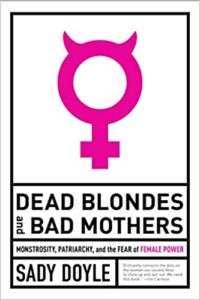

Pet by Akwake Emezi
Make Me A World, 2019
ISBN-13: 978-0525647072
Available: Hardcover, paperback, Kindle edition, audio CD, audiobook
There was a time before the angels came when monsters caged children, polluted the environment, refused to send aid to hurricane victims and refugees, bombed civilians in other countries, shot up schools, and hurt and killed the people around them. The angels led a revolution, changed the laws, and replaced the monuments. Jam’s teachers tell her these angels took their names from angels who weren’t human: but they were imperfect humans doing their best to create a more compassionate, safer, and more just world, and by the time Jam, our protagonist, was born, there are no more monsters.
Or are there?
Jam, curious about the original angels, heads to the library and asks about them, but the pictures she finds are terrifying, not beautiful. She wonders, if angels are terrifying, what do monsters look like? And how would you know? Jam’s mother, Bitter, tells her, “Monsters don’t look like anything… That’s the whole point.” Bitter, an artist, has been consumed with creating a painting of a bloody, goat-legged, horned creature with metallic feathers, and after it is finished, Jam sneaks in to Bitter’s studio and accidentally cuts herself on a razor blade Bitter has embedded in the canvas. Bleeding over it opens a portal, and the creature pushes through, telling Jam to call it Pet. Pet is a hunter of monsters, called through by her because there is a monster in her friend Redemption’s house that needs hunting, but the adults in Jam’s life are not willing to recognize that a monster could still be in their midst.
I feel like this is Emezi’s response to N.K. Jemisin’s “The Ones That Stay and Fight”, which takes place in a utopian alien society where all people are respected for who they are, but knowledge of the outside world is illegal. That story ends with “social workers” executing a man found to be communicating with the less enlightened people of Earth in front of his daughter and taking her into custody to also become a social worker. In that story, questioning is not allowed and people are willing to live in ignorance of the evils of the past in order to live in their ideal society, and a child who gains that knowledge must become part of enforcing the need for that ignorance.
Pet, while it takes place in our near future, reflects some of this abstract speculative thinking, but as a book written for children, it needs to be set out in a concrete way. Emezi has created a society that is a little different from Jemisin’s: many of the people who live in the community remember the time of the monsters, before the revolution eliminated them, but they choose to believe the monsters are gone. The children born after the revolution learn about that time, but aren’t curious about it. Even knowing that they should remember the past, the people are focused on the the blessings of the present. In visiting her friend Redemption’s house, which has always seemed a loving place, Pet encourages Jam to look past the surface to see the unseen. It is uncomfortable for Jam to question what she has always seen and felt there, even knowing there is a monster in the house, and to tell Redemption about it. It is scary to learn about the monsters that existed in families in the past and realize they are still around. It is terrifying to confront trusted adults and have them refuse to believe. No one actually stops Jam and Redemption, but the adults don’t believe the monster exists, even knowing a child is suffering. Pet is there to end the hunt, and the monster, but Jam has to decide exactly what that means. Pet has a more positive vision for the future than Jemisin saw, but it is clear about the perils of believing that there can be an ideal world where monsters no longer exist.
Pet also n9rmalizes and celebrates differences without going into detail about them. Jam is a 16 year old black trans girl who is a selective mute; Redemption has three parents, one of whom is nonbinary; the librarian whizzes around in a wheelchair. Emezi does not stick with standard English. Language is very individual and informal, and dialogue is sometimes almost musical. Without going into graphic detail. Emezi is able to communicate who the monster in Redemption’s house is, and what he has done.
While Jam is supposed to be 16, she neither acts or is treated like a 16 year old. Her thoughts and actions are more like what I would expect from a 10-12 year old, and I think she may have been “aged up” to make it possible for her to have used puberty blockers and had transition surgery (neither of these details are necessary to establish her as a transgender character, so if that was Emezi’s reasoning, the story would have benefited from aging Jam’s character down). While the story does get very dark, I think kids as young as fifth grade might be able to manage this book. At this point, fifth graders have certainly been exposed to the news, and this book gives them a way to process what they’re seeing in the media from a different perspective. Certainly, my children both read The Giver, which has similar themes, at that age. This is a very relevant book, and while not typical horror, it does have unsettling and disturbing moments. Highly recommended.
Contains: Violence, references to rape and child sexual abuse







Follow Us!